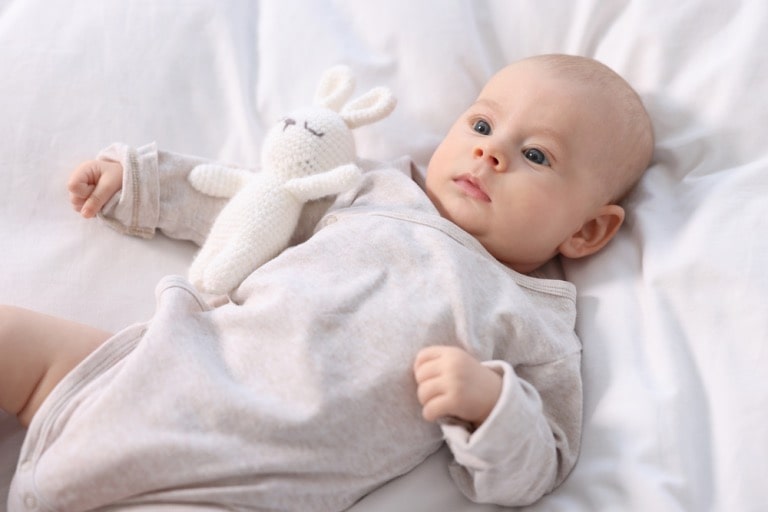How to Care for Knitted Baby Clothes: Washing, Storing, and More

Knitted baby clothes are often delicate and need proper care to maintain their softness, shape, and quality. Whether you’ve knitted these clothes yourself or received them as a thoughtful gift, it’s essential to know the best ways to wash, store, and care for them to keep them looking and feeling great for your little one. Here’s a comprehensive guide to ensure your knitted garments last and stay in tip-top condition.
Washing Knitted Baby Clothes: Keep It Gentle
When it comes to washing knitted baby clothes, the first step is always to check the care label (if it has one) for specific instructions. Knitted garments, especially those made from natural fibres like wool, cotton, or alpaca, can shrink or lose their shape if not treated properly. If you’re still in the process of making one, explore cute cardigan designs by clicking the link.
Tips for Washing:
- Hand Wash: Whenever possible, hand wash knitted baby clothes to ensure a gentle clean. Use lukewarm water and a mild detergent suitable for delicate fabrics.
- Machine Wash: If you prefer using a washing machine, place the knitted items in a mesh laundry bag to protect them. Use the delicate or wool cycle with a gentle detergent.
- Avoid Hot Water: Hot water can cause wool or other natural fibres to shrink, so always use cool or lukewarm water for washing.
- Use Mild Detergents: Harsh chemicals can damage delicate yarn, so choose a gentle detergent that’s designed for wool or delicate fabrics.
- No Fabric Softener: Fabric softeners can coat the fibres of your knitted items, affecting their softness. Stick to a mild detergent instead.
Drying Knitted Baby Clothes: Let Them Breathe
After washing, drying knitted baby clothes requires a little extra care. Avoid using the tumble dryer, as the heat can cause shrinkage and damage to the fibres. Instead, let the clothes dry naturally, preserving their softness and shape.
Tips for Drying:
- Lay Flat to Dry: To maintain the shape of the knitted item, lay it flat on a clean towel or drying rack. Avoid hanging it, as this can cause stretching or misshaping.
- Reshape While Wet: Gently reshape the clothes while they’re still damp to make sure they keep their original form. This is especially important for items like sweaters or hats.
- Avoid Direct Heat: Keep knitted clothes away from direct sunlight or heat sources like radiators, as this can cause colours to fade and fibres to weaken.
Storing Knitted Baby Clothes: Keep Them Safe and Neat
When baby clothes aren’t in use, proper storage is key to preserving their condition. Whether you’re storing knitted garments during a change of season or putting away outgrown clothes, following these tips will ensure they remain in perfect shape.
Tips for Storing:
- Store in a Cool, Dry Place: Keep knitted baby clothes in a cool, dry area away from moisture and direct sunlight. Humidity can cause fabrics to deteriorate over time.
- Use Breathable Storage: Avoid plastic bags, as they can trap moisture and cause mildew. Instead, opt for cotton or linen storage bags, or place clothes in a drawer with good airflow.
- Avoid Overcrowding: If you’re storing several knitted items, don’t overcrowd them in a box or drawer. Allow plenty of space for the clothes to retain their shape.
- Protect from Pests: Wool and other natural fibres can attract moths. Use natural moth repellents like lavender sachets or cedar blocks in your storage areas to keep pests at bay.
How to Choose a Knitting Pattern
Like the Design
First, you need to like what you’re creating. You want your project to be exciting and rewarding. This is only going to happen if you’re looking forward to the item you create at the end. So, make sure you choose a pattern that you like, whether it’s for a blanket or a cardigan. It helps if you know who you’re gifting it to or if you’re going to wear it yourself.
Look at the Difficulty
You want to choose a pattern that’s suitable for your skills. Otherwise, it can be a frustrating project and one that you give up on. Therefore, assess the difficulty of the pattern before buying. Some brands will tell you the difficulty level and give you some examples of what it’ll be like to work on.
Check the Materials
Most people want to buy a pattern that suits the tools and materials you already have. Therefore, this is something that you want to take a look at first. After all, if you don’t have what’s necessary, you’ll have to buy everything, which can drive the price up and mean that you can’t get started straight away.
Conclusion
Caring for knitted baby clothes isn’t difficult, but it does require a little attention to detail. By washing them gently, drying them flat, storing them properly, and handling stains and repairs with care, you can ensure your little one’s knitted garments last longer and stay looking their best. With these tips, your baby can enjoy the softness and warmth of handmade knitted clothing for many months to come.





